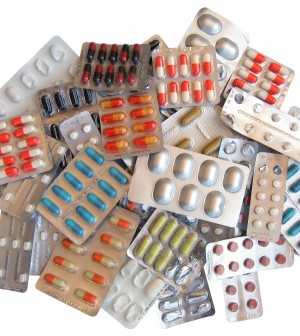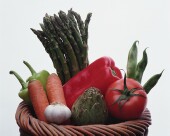- Navigating Your Midlife Crisis: Embracing New Possibilities
- City Raccoons Showing Signs of Domestication
- Mapping the Exposome: Science Broadens Focus to Environmental Disease Triggers
- One Week Less on Social Media Linked to Better Mental Health
- Your Brain Changes in Stages as You Age, Study Finds
- Some Suicide Victims Show No Typical Warning Signs, Study Finds
- ByHeart Formula Faces Lawsuits After Babies Sickened With Botulism
- Switch to Vegan Diet Could Cut Your Greenhouse Gas Emissions in Half
- Regular Bedtime Does Wonders for Blood Pressure
- Dining Alone Could Mean Worse Nutrition for Seniors
Tight Food Budget Can Wreak Havoc on Diabetes Management


People with type 2 diabetes who don’t always have enough money for food have worse blood sugar control than people who don’t worry about where their next meal will come from, new research finds.
“We talk about healthy eating a lot in diabetes education, but we also need to talk about food accessibility. We need to ask, ‘Can you get these foods?’ ” said study author Britt Rotberg, assistant director of the Emory Diabetes Education Training Academy and the Emory Latino Diabetes Education Program in Atlanta.
Rotberg presented the findings on Tuesday at the American Diabetes Association meeting in Boston. Findings presented at meetings are generally viewed as preliminary until they’ve been published in a peer-reviewed journal.
Worrying about having enough food — dubbed “food insecurity” — is an issue for about 14 percent of households in the United States. But there are significant differences in food insecurity by race. Almost 24 percent of Hispanic households face food insecurity, while 26 percent of black households don’t always have enough to eat, according to the U.S. Department of Agriculture (USDA). In white households, that figure is 10 percent.
There are also significant differences in the rate of type 2 diabetes by race. Approximately 8 percent of whites have it, compared to around 13 percent of Hispanics and blacks, according to the American Diabetes Association (ADA).
Previous research has found a 2.5 times higher risk of diabetes in food-insecure households, the researchers said.
The current study included people with type 2 diabetes participating in the Emory Latino Diabetes Education Program. This program is designed to provide education and support to help improve blood sugar management. Two-thirds of the study participants don’t have health insurance. And 76 percent have household incomes below $15,000 a year, according to the study.
The researchers asked whether or not people had been worried about having enough food to eat in the last 30 days. Those who had were identified as food insecure.
There were 137 food insecure people, and 167 people who were food secure, the researchers said. Blood sugar levels were significantly better in people with food security. The A1C level in people who were food secure averaged 7.6 percent. In those who were food insecure, the A1C average was almost 10 percent.
A1C is a blood test that estimates blood sugar levels over the past three months or so. In general, the goal for people with diabetes is to have an A1C of lower than 7 percent, according to the ADA.
The average body mass index (or BMI, which is a rough estimate of body fat) was 31 in both groups, Rotberg said. A BMI of 30 and over is considered obese. Someone who is 5-foot-9 and weighs more than 203 pounds is considered obese, according to the U.S. Centers for Disease Control and Prevention.
“The food insecure are still eating calories, but they’re not healthy calories. Some of the inexpensive foods are processed foods, fast foods and not a lot of vegetables,” Rotberg explained.
The researchers found that the food insecure people weren’t eating as many vegetables. About 38 percent said they ate more than one-third of a plate of non-starchy vegetables at their main meal. For the food secure, 62 percent ate more than a third of a plate of veggies at their primary meal, the study found.
Rotberg said that the researchers suggested using frozen vegetables in the education program. “People often say they can’t buy fresh vegetables because they don’t last long. So, we’re emphasizing frozen, and even canned — watch the sodium though. Frozen can sometimes even be more nutritious than fresh,” said Rotberg.
Nutritionist and diabetes educator Maudene Nelson, from Columbia University in New York City, said when people tell her they can’t afford to eat fresh veggies, she works with them to see which foods they are eating and helps them understand how those foods are affecting their blood sugar levels. “First, there needs to be an awareness that any source of carbohydrate can affect your blood sugar,” she said.
“There’s a lot of misinformation — actually myth-information — around what foods will have an effect on your blood sugar,” Nelson explained.
“Rice, for example. People think brown rice is better for their blood sugar. But, brown rice will have an effect on your blood sugar right away just like white rice. Rice and beans is better, but beans often aren’t a major part of rice and beans,” Nelson said.
She said the plate method is an easy way to start eating healthier. “Fill one-quarter of your plate with a starch, one-quarter with a meat or other protein and half with veggies. The plate method is a good way to make our meals body-friendly.”
More information
Learn more about the food plate method from the American Diabetes Association.
Source: HealthDay
Copyright © 2025 HealthDay. All rights reserved.










